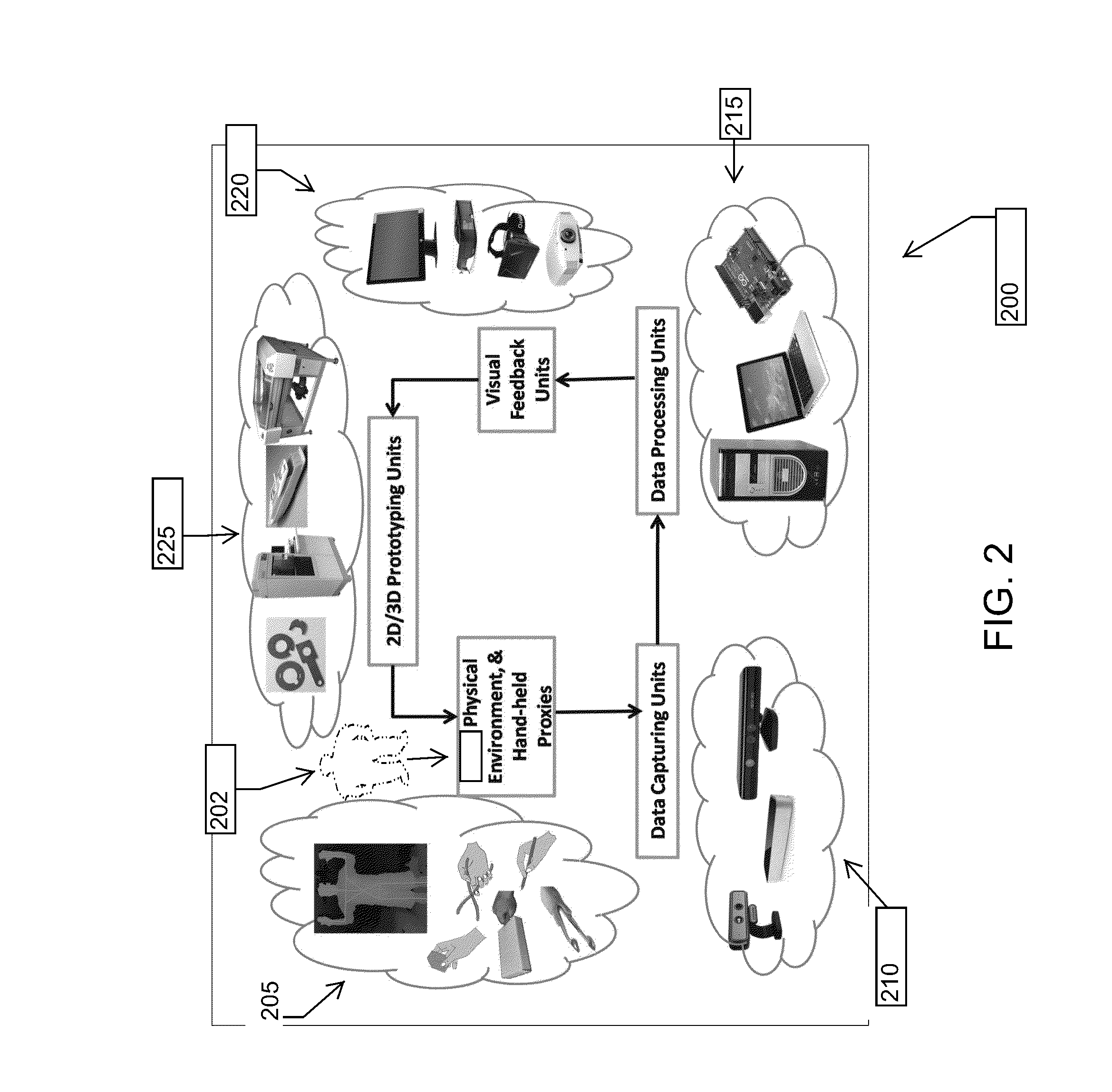Manipulating virtual environment using non-instrumented physical object
a virtual environment and physical object technology, applied in the field of humancomputer interaction, can solve the problems of difficult learning and application of shape modeling tasks, lack of expressiveness of these modalities, and large set of non-intuitive control widgets
- Summary
- Abstract
- Description
- Claims
- Application Information
AI Technical Summary
Benefits of technology
Problems solved by technology
Method used
Image
Examples
example clauses
[0162]A: A method of manipulating a three-dimensional image file including a virtual object, comprising: obtaining image information in a processing device of a tangible inanimate object manipulated by a user, such image information including movement information; causing virtual movement of the virtual object based on the movement information; and displaying the virtual movement of the virtual object on a display.
[0163]B: The method of paragraph A, wherein the processing device associates a shape of the tangible inanimate objection with a predetermined set of constrained movements, and wherein the processor causes the virtual movement of the virtual object within the predetermined set of constrained movements.
[0164]C: The method of paragraph A or B, wherein the tangible inanimate object is one of a block, a rod or a substantially planar object.
[0165]D: The method of any of paragraphs A-C, wherein the tangible inanimate object is grasping tool.
[0166]E: A method of generating a virtu...
PUM
 Login to View More
Login to View More Abstract
Description
Claims
Application Information
 Login to View More
Login to View More - R&D
- Intellectual Property
- Life Sciences
- Materials
- Tech Scout
- Unparalleled Data Quality
- Higher Quality Content
- 60% Fewer Hallucinations
Browse by: Latest US Patents, China's latest patents, Technical Efficacy Thesaurus, Application Domain, Technology Topic, Popular Technical Reports.
© 2025 PatSnap. All rights reserved.Legal|Privacy policy|Modern Slavery Act Transparency Statement|Sitemap|About US| Contact US: help@patsnap.com



